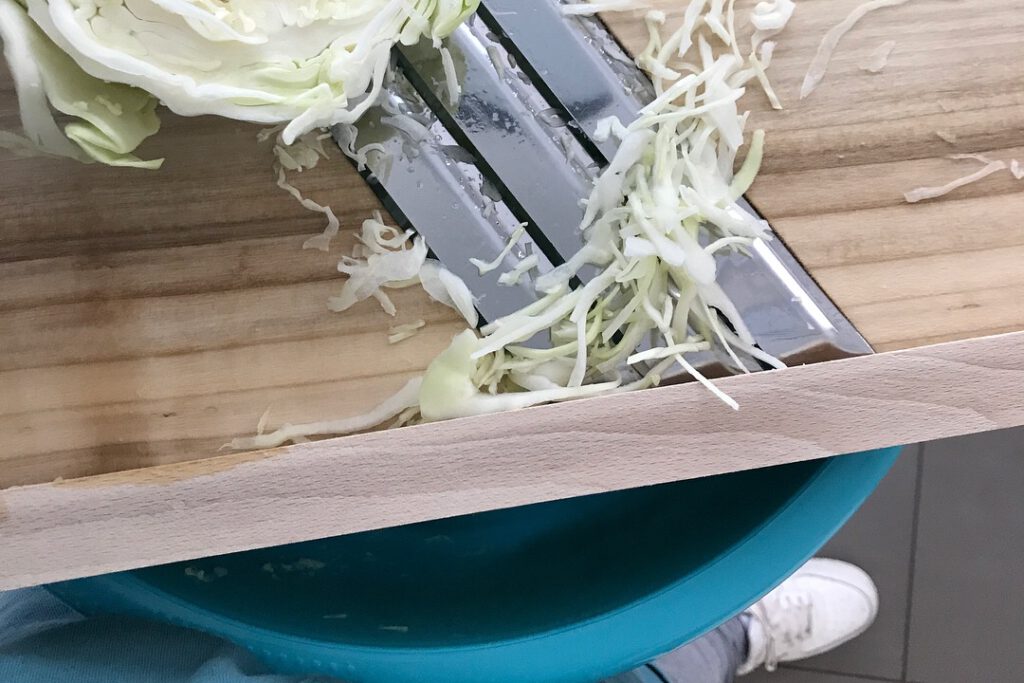
Fermenting what exactly is that? That’s a good question. For me now very normal but perhaps a bit of a mystery to you.
Fermenting is not something we do, microorganisms do that. With the help of fibers (prebiotics) from fruits, vegetables and legumes, microorganisms make substances such as natural antibiotics, short chain fatty acids and vitamins. This process is called fermentation.
Microorganisms are everywhere. On everything that lives in nature, in the air, water on animals, people and objects.
A factor of 10 more microorganisms live in our colon than the number of cells that make up our body. Isn’t that amazing.
It is estimated that there are 1000 different types of microorganisms living in our gut, and only 25% of them are known to us. You can imagine that the potential influence of these microorganisms on our health is enormous.
Fermentation changes the taste, aroma, color and texture of our food and drink. In most cases, you can also keep the foods longer when they are fermented. This is because the microorganisms produce short chain fatty acids. These acids protect the nutrients against undesirable rotting.
So how can we help microorganisms to ferment well?
We can facilitate a good living environment for the micro-organisms so that they can ferment optimally. The optimal living environment depends on the microorganism but as a rule of thumb, there are cultures that thrive in an environment with sugar or salt. Temperature, light, oxygen or the lack of it & the cleanliness are of course other factors that will determine how will the microorganisms will grow.
With drinks such as kombucha and waterkefir we add a starter culture, sugar and water and with vegetables such as sauerkraut and kimchi we add salt. It is important to make sure that the proportions are correct so that the fermented drinks and vegetables are safe for consumption.
Fermented drinks safe measure meats are; 10% starter culture & 5% sugar The fermentation time is also strongly dependent on the temperature and the type of microorganism. The ideal temperature is between 20-30 degrees. The fermentation of water kefir takes 48 hours. Kombucha in contrast takes 3 weeks.
The required salt content for cruciferous vegetables such as cabbage and green leafy vegetables is 2.5%, for cucumber & courgette 3%, green legumes 3.5%, peppers 4% and for aubergine & tomato 4.5%. Measuring is essential.
You weigh the total weight in grams of the vegetable plus any added water that you multiply by the required salt % the amount that comes out of this is the number of grams of salt you need to add to create a safe fermentation environment.
It is best to let vegetables ferment for 3 weeks. This way you ensure that the Lactobacillus can multiply optimally. When the Lactobacillus are present as the dominant population, they produce enough lactic acid to preserve the vegetables. They can live for 6-9 months at a temperature of about 6 degrees.
Fermentation does not only take place outside our body but also within our body. When you eat a varied diet, you will also have a more diverse gut biotics. The importance of a diverse microbiome for our health is shown by more and more studies.
Food for your gut bacteria is also called prebiotics or soluble (fermentable) fiber. These fibers are found in fruits, vegetables and legumes.
Our body also needs insoluble (non-fermentable) fiber. These fibers absorb a lot of moisture and ensure smooth and regular bowel movements. These fibers can be found in whole grain products, grain products, seeds and nuts.



